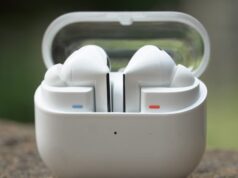If you’re interested in the best ways to save your images, you may have come across the term JPEG XL.
Apple brought JPEG XL to light when it announced that it would be supporting the image format on its iPhone 16 devices.
Keep reading to learn everything you need to know about this surprisingly compact update to the current JPEG standard.
What is JPEG XL?
JPEG XL is a file format introduced by the JPEG committee in 2022. It is designed to replace the aging JPEG standard that was introduced in 1992.
Despite the common acronym, XL doesn’t mean ‘extra large’ in this instance. Rather, the X is taken from the other JPEG standards created over the years, including JPEG XT, JPEG XR and JPEG XS. The L in the name stands for ‘long-term’ and refers to JPEG XL’s potential to remain a popular format for as long as JPEG has.
Is JPEG XL better than JPEG?
So, how does JPEG XL compare to the existing JPEG format?
JPEG XL files are up to 55% smaller than regular JPEG files. This means they take up less storage on your device, are quicker to transfer and are faster to load when shared online.
JPEG XL images are also visually lossless. This means you won’t lose any detail during the compression process when saving your images as JPEG XL files or converting your older JPEGs into the new format to save space.
The colour accuracy is better, too. JPEG XL supports wide-gamut and HDR, allowing for better replication of colours and higher dynamic range.

According to JPEGXL.info, a website whose contributors include JPEG experts who contributed to the JPEG XL standard, JPEG XL is the best-in-class format for compressing photographic images and even better at compressing and storing non-photographic images, including graphics, illustrations and digital art.
Not only does JPEG XL offer many advantages for the individual using the file format, but it could even have a positive impact on the environment. JPEGXL.info claims that if all current JPEGs were delivered as JPEG XLs with an average 20% decrease in file size, 4.87 GWh could be saved per day. This is “equivalent to powering 487,000 average US homes for an hour and saving 3,500 metric tons of CO2 emissions per day”, according to the website.
JPEG still takes the lead when it comes to support. However, with Apple introducing support across its ecosystem and Samsung announcing support on the Galaxy S24 series earlier this year, it seems it might not be long until JPEG XL kickstarts its takeover.











